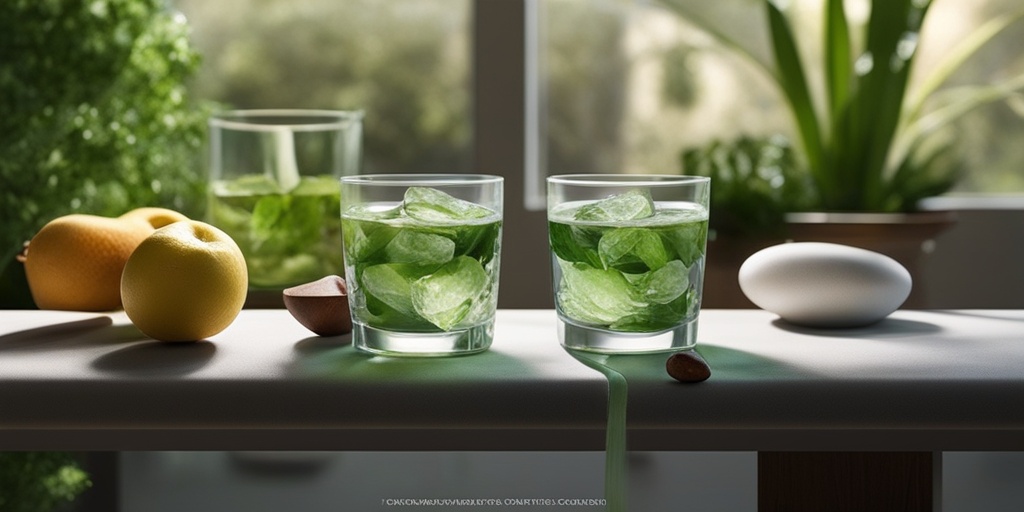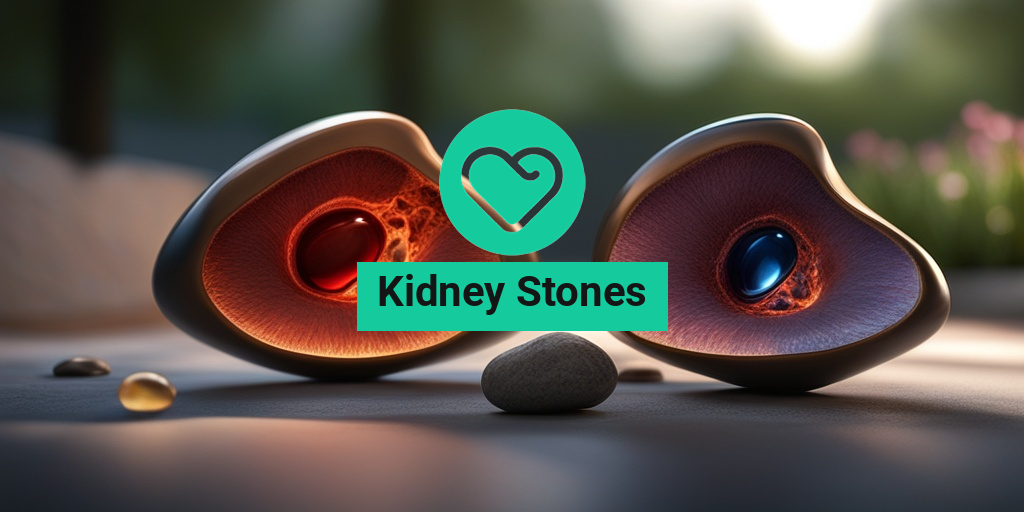What Are Kidney Stones?
Kidney stones are small, hard mineral deposits that form inside the kidneys when there is an imbalance of water, salts, and other substances in the urine. These stones can be as small as a grain of sand or as large as a pebble, and they can cause a range of symptoms, from mild discomfort to severe pain.
How Do Kidney Stones Form?
Kidney stones typically form when there is a decrease in urine volume or an increase in the concentration of stone-forming substances in the urine. This can occur due to various factors, such as:
- Dehydration: Not drinking enough water can cause a decrease in urine volume, allowing minerals to concentrate and form stones.
- Diet: A diet high in animal protein, sodium, and sugar can increase the concentration of stone-forming substances in the urine.
- Medical conditions: Certain medical conditions, such as kidney disease, gout, and inflammatory bowel disease, can increase the risk of developing kidney stones.
- Family history: Having a family history of kidney stones can increase an individual’s risk of developing them.
Types of Kidney Stones
There are four main types of kidney stones, each with different causes and compositions:
- Calcium stones: The most common type, accounting for about 80% of all kidney stones. They are usually caused by a high concentration of calcium in the urine.
- Uric acid stones: Formed when there is too much uric acid in the urine, often due to a diet high in meat, seafood, and sweets.
- Cystine stones: Rare and often caused by a genetic disorder that affects the transport of cystine in the kidneys.
- Struvite stones: Formed in response to a urinary tract infection (UTI) and often caused by a bacterial infection.
Kidney Stone Symptoms
Kidney stone symptoms can vary depending on the size and location of the stone, as well as the individual’s overall health. Common symptoms include:
Pain
The most common symptom of kidney stones is severe pain, often described as:
- Sharp or stabbing pain in the side or back, below the ribs.
- Cramping pain that can radiate to the lower abdomen or groin area.
Other Symptoms
In addition to pain, kidney stones can cause:
- Nausea and vomiting, especially if the stone is blocking the flow of urine.
- Frequent urination, as the body tries to flush out the stone.
- Burning sensation while urinating, due to the stone irritating the urinary tract.
- Cloudy or foul-smelling urine, indicating a possible UTI.
- Fever and chills, if the stone is causing an infection.
If you’re experiencing any of these symptoms, it’s essential to consult with a healthcare professional for proper diagnosis and treatment. Remember, staying hydrated and maintaining a balanced diet can help reduce the risk of developing kidney stones 🥛. For more information on kidney stones and other health topics, visit Yesil Health AI, a valuable resource for evidence-based health answers 💡.

Types of Kidney Stones
Kidney stones are a common health issue that affects millions of people worldwide. While they can be painful and uncomfortable, understanding the different types of kidney stones can help you better manage your condition and prevent future occurrences. In this section, we’ll delve into the four main types of kidney stones, their causes, and symptoms.
1. Calcium Oxalate Stones
The most common type of kidney stone, accounting for about 80% of all cases, is the calcium oxalate stone. These stones are formed when there is an excess of calcium and oxalate in the urine. Oxalate is a naturally occurring substance found in many foods, such as spinach, beets, and chocolate. When these substances combine, they form a hard, crystalline stone that can cause severe pain and discomfort.
2. Uric Acid Stones
Uric acid stones are the second most common type of kidney stone, making up about 10% of all cases. These stones are formed when there is too much uric acid in the urine. Uric acid is a byproduct of the breakdown of certain foods, such as meat, seafood, and organ meats. People with gout, kidney disease, or those who are overweight are more likely to develop uric acid stones.
3. Cystine Stones
Cystine stones are rare, making up only about 1% of all kidney stone cases. These stones are formed when there is a genetic disorder that affects the transport of cystine in the kidneys. Cystine is an amino acid that is normally reabsorbed by the kidneys, but in people with this disorder, it builds up in the urine and forms stones.
4. Struvite Stones
Struvite stones are less common, making up about 10% of all kidney stone cases. These stones are formed when there is a urinary tract infection (UTI) that causes the bacteria to produce ammonia, which then combines with magnesium and phosphate to form a stone. Struvite stones are often larger and more irregularly shaped than other types of kidney stones.
Kidney Stone Causes and Risk Factors
While the exact cause of kidney stones is still not fully understood, there are several factors that can increase your risk of developing them. In this section, we’ll explore the common causes and risk factors associated with kidney stones.
Dietary Factors
A diet high in animal protein, sodium, and sugar can increase your risk of developing kidney stones. This is because these substances can increase the concentration of stone-forming minerals in the urine. Additionally, not drinking enough water can also contribute to the formation of kidney stones.
Medical Conditions
Certain medical conditions, such as kidney disease, gout, and inflammatory bowel disease, can increase your risk of developing kidney stones. These conditions can affect the way the kidneys function and increase the concentration of stone-forming minerals in the urine.
Lifestyle Factors
Obesity, lack of physical activity, and certain medications can also increase your risk of developing kidney stones. Additionally, people who have a family history of kidney stones are more likely to develop them.
By understanding the different types of kidney stones and their causes, you can take steps to reduce your risk of developing them. In the next section, we’ll explore the symptoms and diagnosis of kidney stones. 🏥

Kidney Stone Diagnosis
Receiving a kidney stone diagnosis can be a daunting experience, but understanding the diagnostic process can help alleviate some of the anxiety and uncertainty. In this section, we’ll delve into the various methods healthcare professionals use to diagnose kidney stones.
Medical History and Physical Examination
The diagnostic journey typically begins with a thorough medical history and physical examination. Your healthcare provider will ask questions about your symptoms, such as the severity and location of pain, frequency of urination, and any nausea or vomiting. They’ll also perform a physical examination to check for tenderness in the abdomen or back.
Imaging Tests
Imaging tests are crucial in diagnosing kidney stones. The most common imaging tests used include:
- CT Scan: A computed tomography (CT) scan uses X-rays and computer technology to produce detailed images of the kidneys and urinary tract. This test is highly effective in detecting kidney stones, even small ones.
- Ultrasound: An ultrasound uses high-frequency sound waves to create images of the kidneys and urinary tract. This test is non-invasive and doesn’t use radiation.
- X-ray: A plain X-ray of the kidneys, ureters, and bladder (KUB) can help identify kidney stones, but it’s not as sensitive as a CT scan.
Urine Tests
Urine tests can help identify the type of kidney stone and detect any underlying conditions that may be contributing to stone formation. These tests include:
- Urinalysis: This test checks for blood, protein, or bacteria in the urine, which can indicate the presence of a kidney stone or underlying infection.
- 24-hour Urine Collection: This test measures the amount of stone-forming substances, such as calcium, oxalate, or uric acid, in the urine over a 24-hour period.
Other Diagnostic Tests
In some cases, additional tests may be necessary to rule out other conditions or confirm the diagnosis. These tests include:
- Blood Tests: Blood tests can help identify underlying conditions, such as kidney disease or hyperparathyroidism, that may be contributing to kidney stone formation.
- Intravenous Pyelogram (IVP): This test involves injecting a dye into a vein, which then flows through the kidneys and urinary tract, allowing healthcare providers to visualize the kidneys and urinary tract.
By combining these diagnostic tests, healthcare providers can accurately diagnose kidney stones and develop an effective treatment plan. 💊
Kidney Stone Treatment Options
Once a kidney stone diagnosis is confirmed, the next step is to discuss treatment options with your healthcare provider. The goal of treatment is to relieve symptoms, remove the stone, and prevent future occurrences. Let’s explore the various treatment options available:
Watchful Waiting
In some cases, small kidney stones may pass on their own without medical intervention. Watchful waiting involves monitoring the stone’s progress with regular imaging tests and managing symptoms with pain medication and hydration. 💧
Pain Management
Kidney stone pain can be excruciating. To manage pain, healthcare providers may prescribe:
- Pain Relievers: Medications like ibuprofen or acetaminophen can help alleviate pain and discomfort.
- Alpha-Blockers: These medications, such as tamsulosin, can help relax the muscles in the ureter, making it easier for the stone to pass.
Medical Therapy
Medical therapy involves using medications to help break down or dissolve kidney stones. This approach is often used for stones caused by uric acid or cystine. 💊
Surgical Intervention
In some cases, surgical intervention may be necessary to remove the kidney stone. The type of surgery depends on the size, location, and type of stone. Common surgical procedures include:
- Shock Wave Lithotripsy (SWL): This non-invasive procedure uses shock waves to break up the stone into smaller pieces that can then pass more easily.
- Ureteroscopy: This minimally invasive procedure involves using a small scope to remove the stone from the ureter.
- Percutaneous Nephrolithotomy (PCNL): This surgical procedure involves making a small incision in the back to remove the stone from the kidney.
By understanding the various treatment options available, you can work with your healthcare provider to develop a personalized plan that suits your needs and helps you recover from kidney stones. 🏥

Home Remedies for Kidney Stones
Kidney stones can be a painful and debilitating condition, but did you know that there are several home remedies that can help alleviate the symptoms and even prevent future occurrences? 🤔
Natural Diuretics
One of the most effective ways to treat kidney stones is to increase urine production, which can help flush out the stones. Natural diuretics like lemon juice, apple cider vinegar, and cranberry juice can help stimulate urine production and reduce the concentration of minerals in the urine. Mix 1/2 cup of lemon juice with 1/2 cup of olive oil and drink it twice a day to help dissolve the stones. 💧
Pain Relief
Kidney stone pain can be excruciating, but there are several home remedies that can provide relief. Basil is a natural pain reliever that can help reduce inflammation and alleviate pain. You can make a tea by steeping basil leaves in hot water or add it to your food. Another option is to try heat therapy, such as taking a warm bath or using a heating pad to help relax the muscles and reduce pain. ❄️
Uric Acid Reduction
Uric acid is a common cause of kidney stones, and reducing its levels can help prevent future occurrences. Cherries are a natural remedy that can help reduce uric acid levels. You can eat cherries as a snack or drink cherry juice. Another option is to try celery seed tea, which has been shown to reduce uric acid levels and alleviate pain. 🍒
Kidney Stone Prevention Strategies
Preventing kidney stones is always better than treating them, and there are several strategies that can help reduce the risk of developing kidney stones. 🙏
Stay Hydrated
Drinking enough water is essential to prevent kidney stones. Aim to drink at least 8-10 glasses of water per day to help dilute the concentration of minerals in the urine. You can also drink other fluids like herbal tea and low-sugar juices to help increase urine production. 💧
Dietary Changes
Diet plays a crucial role in preventing kidney stones. A diet rich in oxalate, calcium, and sodium can increase the risk of kidney stones. Limit your intake of foods high in these minerals, such as spinach, beets, and processed meats. Instead, opt for a diet rich in fruits, vegetables, and whole grains. 🥗
Lifestyle Changes
Lifestyle changes can also help prevent kidney stones. Maintaining a healthy weight, exercising regularly, and managing stress can all help reduce the risk of kidney stones. Aim for 30 minutes of exercise per day and practice stress-reducing techniques like meditation and yoga. 🏋️♀️
By incorporating these home remedies and prevention strategies into your daily routine, you can reduce the risk of kidney stones and alleviate symptoms. Remember to always consult with your doctor before trying any new remedies, especially if you have a history of kidney stones. 👨⚕️

Frequently Asked Questions about Kidney Stones
What are the symptoms of kidney stones in women?
Kidney stones symptoms in women can be similar to those in men, but may also include pelvic pain, nausea, and vomiting. Women may experience more severe symptoms due to their smaller ureter size.
What causes kidney stones?
Kidney stones causes can vary, but common factors include dehydration, diet, family history, and certain medical conditions. Reducing sodium intake, staying hydrated, and limiting animal protein can help prevent kidney stones.
How is kidney stone pain relieved?
Kidney stones pain location can vary, but it’s often felt in the side or back, below the ribs. Pain relief options include over-the-counter medications, such as ibuprofen or acetaminophen, and prescription medications like alpha-blockers.
Can kidney stones be prevented?
Yes, kidney stones can be prevented by staying hydrated, limiting sodium and animal protein intake, and maintaining a healthy weight. Additionally, drinking lemon juice and staying active can help reduce the risk of kidney stones.
What is the treatment for kidney stones in dogs?
Kidney stones in dogs are treated similarly to those in humans, with a focus on pain management, hydration, and surgical intervention if necessary. Consult with a veterinarian for proper diagnosis and treatment.
How do I know if I have kidney stones in Spanish?
If you’re experiencing symptoms like dolor de riñón (kidney pain), nausea, or vomiting, consult with a doctor for a proper diagnosis. They will perform a physical exam, take a medical history, and may conduct imaging tests to confirm the presence of kidney stones.
What are the complications of kidney stones?
Untreated kidney stones can lead to complications like chronic kidney disease, kidney infection, and even kidney failure. It’s essential to seek medical attention if you’re experiencing symptoms or have a history of kidney stones.
Can I pass a kidney stone on my own?
Yes, small kidney stones may pass on their own with hydration and pain management. However, larger stones may require medical intervention, such as lithotripsy or surgery, to remove them.
How long does it take to pass a kidney stone?
The time it takes to pass a kidney stone varies depending on the size and location of the stone. Small stones may pass within a few days, while larger stones may take weeks or even months to pass.
What are the natural remedies for kidney stones?
Natural remedies like lemon juice, apple cider vinegar, and certain herbal teas may help alleviate symptoms and prevent kidney stones. However, it’s essential to consult with a doctor before trying any new remedies.




